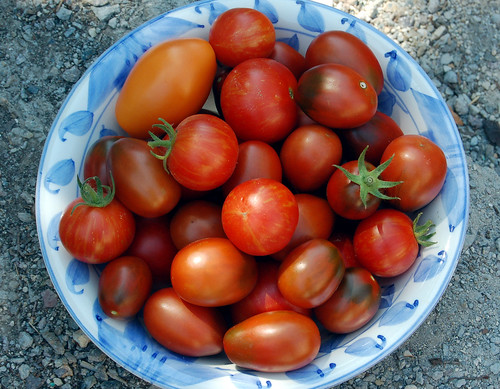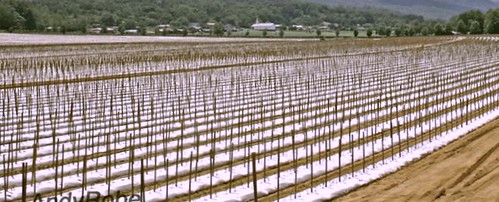How cities are like tomatoes

Posted December 12, 2011 at 1:28PM
This is going to be one of the easiest posts I have ever written, because all I need to do is quote my cyber-friend and fellow writer Ben Brown, and then send you to his own clever and illuminating essay. Ben, who is a principal in the town planning and consultng firm PlaceMakers, thinks cities have evolved like one of my favorite foods:
"Consider the tomato. More specifically the winter tomato, as designed and manufactured in Florida.
"In Tomatoland: How Modern Industrial Agriculture Destroyed Our Most Alluring Fruit, food writer Barry Estabrook shows how things go haywire when you’re determined to dumb down complexity. As Estabrook describes it, Florida tomato growers have one big advantage, a winter growing season, and one big marketing concept: A tomato defined by factory-perfect roundness and redness.
"The trouble is, to get to the round and red, the growers have to dispense with a lot of other stuff that should have some bearing on the value of tomatoes worth buying and eating. Such as: Taste and nutrition, product safety, and labor issues that approximate (and sometimes equate to) slavery . . .
"[T]he sandy soil needs an infusion of expensive, chemical fertilizers to grow non-native plants like tomatoes. And the heat and humidity favor bugs that, according to Estabrook, require some 100 different varieties of pesticides to control. Then, to get a product that can stand up to the time and distance from field to produce section, the already over-engineered tomatoes have to be harvested green and hard, then gassed to ripe-appearing color with ethylene."
OK, you may be thinking, that's quite an indictment of current farming methods, but what does that have to do with cities? Later in his essay, Ben continues:
"The tomato growers’ mistakes are anchored in a fundamental perception problem. What gives tomatoes value is a set of complex, interconnected variables that can be taken for granted when tomatoes are grown in hospitable climates, seasons and soil conditions and when they’re consumed short distances from the fields . . .
"By redesigning tomatoes to optimize a particular shape and hue, then contorting the growing process for the convenience of transport and just-in-time delivery, the South Florida tomato industry engineered the value out of the product, drained humanity out of the process and wed themselves to an unsustainable business model.
"Sound familiar? . . .
"[W]e’ve allowed similar approaches to dominate the “industries” of designing and building the places where we live, work and play.
To optimize distance from noxious industries, we impose zoning separated by use and break apart the connections of community. To optimize private automobile convenience, we bring highways into cities, design neighborhoods and buildings around parking and kill street life. To optimize privacy, we move living quarters to the burbs and force long daily commutes and recreation by appointment. To optimize affordability, we prioritize drive-til-you-qualify financing and isolate people with the fewest resources from employment and education. To optimize appeal to relocating businesses, we incentivize environmental risk and waive the taxes that support the quality of life that businesses list as a reason to relocate.
"What’s missing is an appreciation of the way tomatoes — and other real world entities — work. Ours is a universe of constantly emerging interactions. Push on one thing, lots of other stuff starts moving around . . ."
I'm pretty sure that Ben won't mind my quoting him at some length here. There is much more in his full article, which I encourage you to read. While he starts with what seems like a preposterous simile (cities are like tomatoes . . . yeah, sure), it's really not a bad way to get us thinking about the ways in which the human environment is like the natural environment, and how lessons available in one can help us avoid or correct mistakes in the other.
Move your cursor over the images for credit information.


